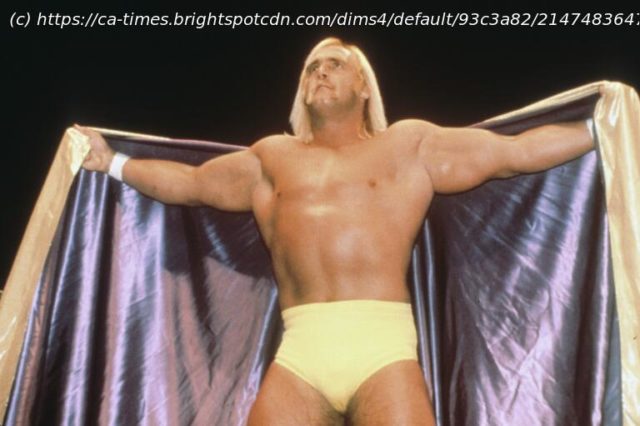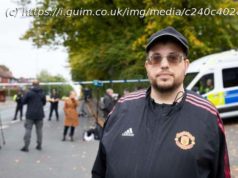Hulk Hogan, who died Thursday at 71, had many ups and downs during his career as a professional wrestler.
Hulk Hogan, who died Thursday at 71, was a star in pro wrestling, perhaps the star, through its two biggest popularity booms in the mid 1980s and the late 1990s. But after being the biggest star in, there was a lot of controversy along the way and his career ended in a hail of boos.
Hogan burst onto the scene in the 1982 movie “Rocky III,” where he played a pro wrestler called Thunderlips, who was taking on Rocky Balboa in a match for charity. He appeared on “The Tonight Show starring Johnny Carson” and caught the eye of Vince McMahon, who was planning on buying the then-World Wrestling Federation from his father and taking it nationwide, He was looking for a star to build the promotion around. Hogan was wrestling for the American Wrestling Assn. and was growing frustrated that they never gave him the promotion’s championship, which usually led to making more money.
McMahon bought the WWF and started poaching talent from around the country. Hogan signed in late 1983, breaking his AWA contract and no-showing several dates. McMahon quickly put the championship on Hogan, who came into the ring to the song “Real American,” tore off his T-shirt, told his fans to “train, say your prayers and take your vitamins,” and vowed to defeat the heel of the month because “Whatcha gonna do, King Kong Bundy or Paul Orndorff or Kamala or Roddy Piper, when Hulk Hogan and Hulkamania run wild on you.”
It was a formula for success for many years, lifting pro wrestling to the mainstream with appearances on MTV and NBC, where WWF filled in for “Saturday Night Live” every six weeks and drew better ratings, all with Hogan headlining.
In 1989, Hogan tried to branch off into movies, produced by McMahon. They all flopped. “No Holds Barred.” “Suburban Commando.” “Mr. Nanny.” The persona that worked so well in the ring did not translate onto the big screen like it later did for wrestling stars such as Dwayne Johnson and Dave Bautista.
In 1991, Dr. George Zahorian III was convicted of illegally supplying anabolic steroids. Zahorian also served as the ringside doctor for WWF matches in Pennsylvania. At his trial, it was revealed that Zahorian had supplied steroids to the WWF and its wrestlers. Hogan, hoping to end discussion that he was on steroids, appeared on “Arsenio Hall” in 1992 and said that he has only used steroids on three occasions, all under doctor’s care to rehabilitate muscle injuries.
The outcry was immediate, with wrestlers coming out to says Hogan was lying. Fans, who could see how well-built these stars were, were disillusioned that Hogan would lie.






